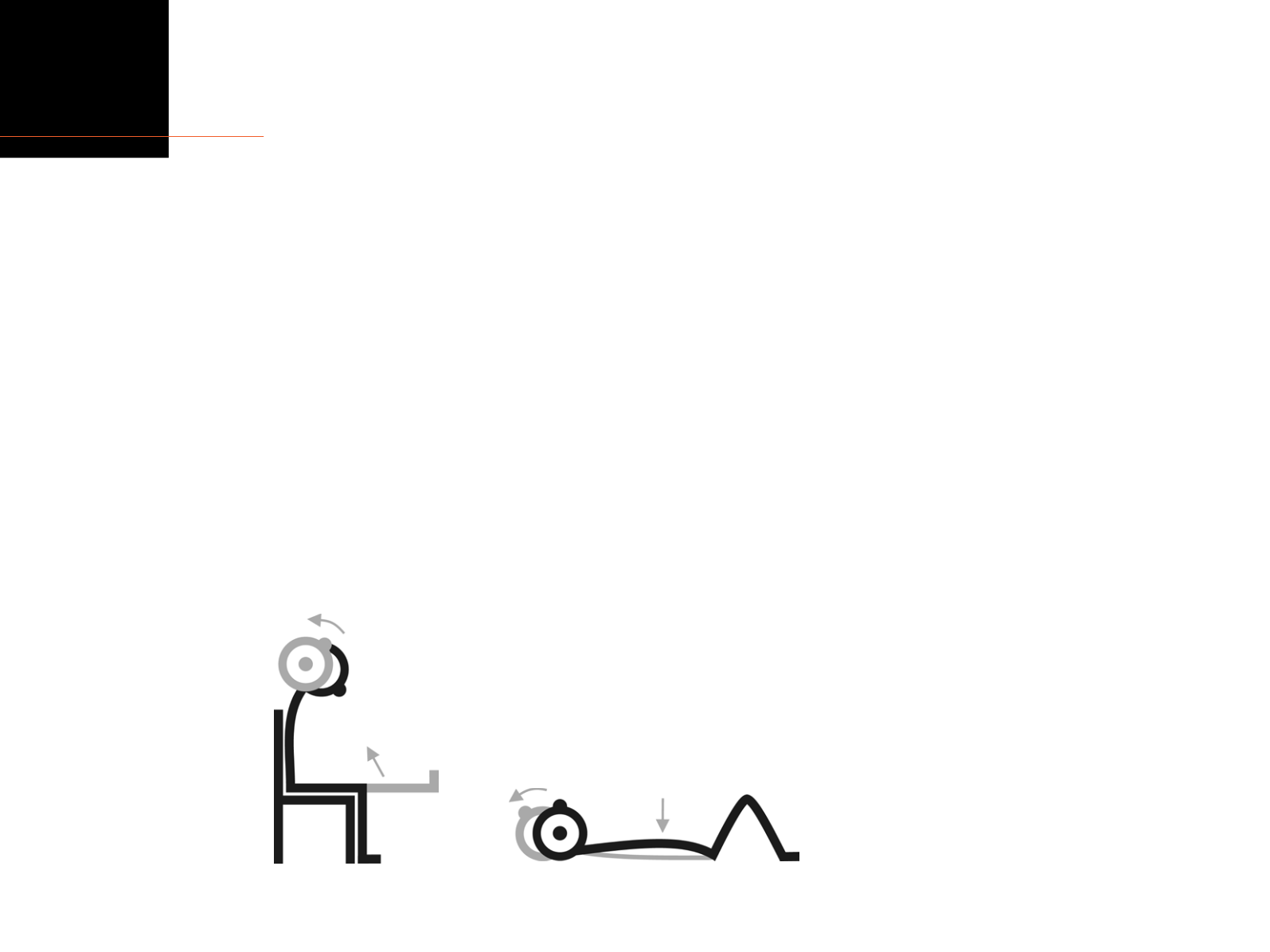
explain
pain
section
6
page
124
Accessing the virtual body
(continued)
9. Break down functional movements that involve
the back
People who have persistent pain lose their quality of
movement – they perform activities such as rising from a
chair or picking up an object from the floor in very
regimentedways. See if you can perform the activity in
different ways. For example, when you rise from a chair, try
it with one foot forward then the other, leadwith the head,
with eyes open or closed and try performing the routines at
different speeds. Feed some quality varietal movement to
the brain.
10. ‘Sliders’
‘Sliders’ are techniques that encourage total body
movement.
56
An example of a slider is when you lie on your
backwith your knees bent and feet on the floor, and flatten
your back (thus flexing it up a little) and at the same time
tilt your chin upwards. This allows distraction plus
movements which are unlikely to aggravate sensitive alarms
in your low back. Another slider is to sit upright in a chair
and sag your back, hold under your thigh and extend your
knee while tipping your head back. Think about kicking
your head off!
11. Performmovements with neighbouring tissues in a
‘friendly’ state
Sitting in a chair, if you bend forwards and have your chin
tilted forwards it will slacken some of your nerves in the
back. Bending forwards when sittingmeans that some of
the tension is taken away from the tissues in your hips and
legs. Youmay need to look at page 116 to incorporate these
movements into a pacing process that will work for you
without making your pain flare up.
sliders


